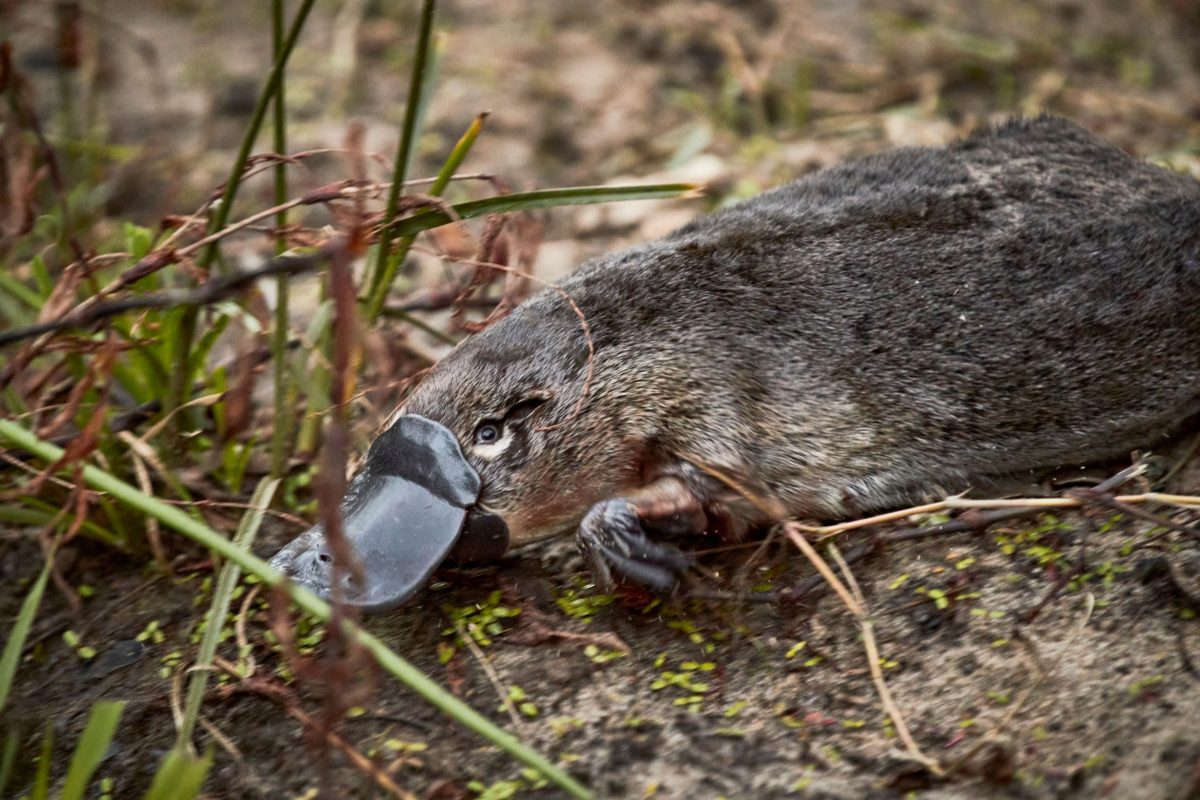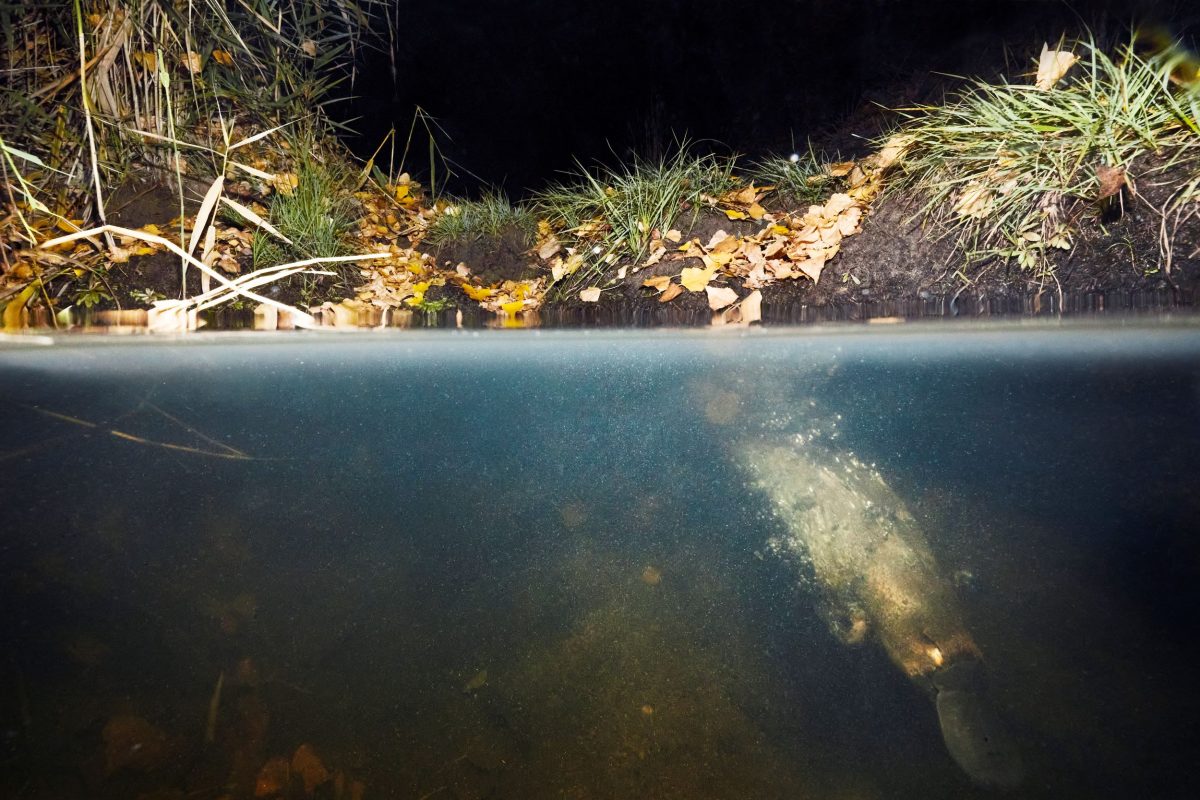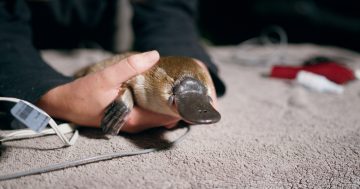
A male platypus released into the Hacking River last year starts exploring. Photos: Supplied.
If you’re heading to the Royal National Park during the holidays, keep an eye out for one of the park’s precious new residents – platypuses.
Ten platypuses were reintroduced to the Royal in May last year, after being locally extinct for 50 years. Each of them carries an acoustic tag that pings listening receivers up and down the park’s rivers.
The latest data shows nine of the 10 animals are adapting well to their environment. The 10th platypus has ventured beyond the team’s tracking capabilities, which she has done before, and the research team believes she is exploring creeks she has previously visited.
This project is a collaboration between the Platypus Conservation Initiative (UNSW Sydney), WWF-Australia, the NSW National Parks and Wildlife Service and the Taronga Conservation Society.
UNSW platypus expert and lead researcher Dr Gilad Bino said the reintroduction had “exceeded our expectations”.
“The platypuses have adapted exceptionally well to the Royal National Park, a testament to the robustness of both the species and the habitat,” he said.
“We are closely monitoring the one platypus which has ventured beyond our monitoring capacity, but she will no doubt reconnect soon.”
Visitors to the Royal National Park are now regularly reporting platypus sightings.
Dr Bino and his colleague Tahneal Hawke have extensive experience in conservation programs to protect platypuses against the threats of climate change, vanishing habitats due to human development, and disconnected waterways.
They spent three years planning the move, including visiting seven river sites between Kangaroo Valley and the Snowy Mountains to gather animals suitable to rehome in the Royal.
Because platypuses are nocturnal animals, all work had to take place between dusk and dawn.
Plans are underway to conduct comprehensive surveys in the park next year to assess the breeding success and overall health of the platypus population. The goal is to confirm whether the reintroduced platypuses have successfully reared young.
The Royal National Park is one of the oldest national parks in the world, established in 1879 by the colonial government of NSW.
According to research conducted by the team, the platypuses were occasionally spotted in the rivers flowing through Royal National Park until the beginning of the 1970s.
However, there have been no confirmed sightings in the past 50 years. In 2021, a team of UNSW scientists and volunteers from Friends of the Royal conducted environmental DNA surveys, testing the water and looking for evidence of which animals frequented the rivers.
The survey found traces of about 250 land and water species in the Hacking River and Kangaroo Creek, but no platypuses.

The reintroduction of platypuses to the Royal National Park has “exceeded expectations”.
In an interview last year, Dr Bino said it was difficult to pinpoint one particular reason for the platypuses’ disappearance.
“Siltation of the park’s rivers as a result of upstream development, poor operation by the coalmine, loss of connectivity and invasive species may have all contributed,” he said.
“Those potential causes relating to industrial development may have abated over the past few decades, which could mean the park is in a general upward trajectory. Meanwhile, invasive species are now being managed.”
Reintroducing platypuses to the national park was not just about trying to right past wrongs caused by human activity, Dr Bino said, but part of a longer game plan that aimed to strengthen the species’ survival into the future.
“The survival of any species depends on the free movement of individuals from one group to another. This is because the need to exchange genetic material is paramount to a species’ long-term survival,” he said.
“Unfortunately, humans have not protected the environment and we’ve seen the platypuses’ habitat diminish.
“On top of that, we’ve broken what little connections platypus groups had to each other by damming rivers and making it impossible for that flow of genetic information to continue back and forth along the waterways.”
Water quality in the Hacking River has improved and is thriving with food life for the platypuses, such as small aquatic animals like dragonfly nymphs, caddis fly larvae and small shrimps.
Dr Hawke said the water quality was comprehensively tested before the platypuses were introduced.
“Recent water quality and macro-invertebrate surveys show the system is in generally good condition, offering suitable resources for the platypuses,” she said.
“As they enter their breeding season, we are optimistic they will breed.”











